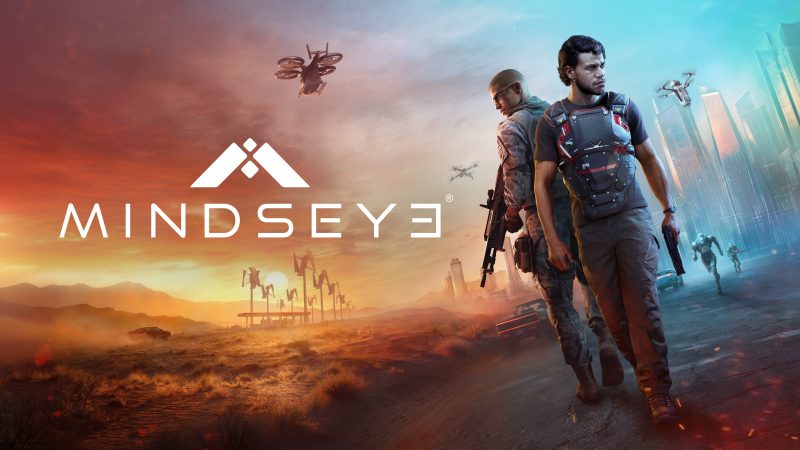How Coin Crew entered digital gaming with Escape Academy – PlayStation.Blog

Before Escape Academy, Coin Crew Games produced location-based entertainment (LBE) experiences such as escape rooms and arcade cabinets. Producing an escape room called Space Squad in Space is how Wyatt Bushnell and Mike Salyh met, placing them on the path to founding Coin Crew Games.
The original goal for the studio was to design casual arcade experiences for large groups of friends to have some friendly competition. These first arcade cabinets took the shape of the licensed racing machine Hot Wheels: King of the Road and Coin Crew Game’s first original title, Battle Bowling.
Battle Bowling pits up to four people against each other who must frantically spin a large orb to navigate a hazardous track and knock over the most pins. It will bowl your mind.
During the development of our third cabinet, the pandemic struck, forcing the closure of physical entertainment spaces. We figured out how to translate our talent and experience into a digital title. This exploration brought us to the idea of bringing the escape room experience to the digital space.
And thus, Escape Academy was born!
The difference in physical versus digital and making the transition
Unlike most digital titles, physical experiences range from three to sixty minutes, so a key component is ensuring the game is immediately understandable with zero tutorialization. Players need to understand the objective simply by looking at the cabinet. Becoming practiced at simplicity was a key component in making Escape Academy accessible.
In the case of Hot Wheels: King of the Road, the goal is simple. Outdrive your friends and be the first to the finish line.
Regarding puzzle design, an essential component is building clues and ways for players to deduce the solution. In real-life escape rooms, everything is a potential clue at first glance, so players spend much of the experience inspecting objects to determine their relevance to the puzzles. To recreate this digitally, every object in the environment must be programmed as an interactable, which posed a challenge scope-wise.
This engineering limitation made us decide to be very selective about what pieces of the environment became interactable, which afforded us much control over guiding the player’s path through the room. This was a critical way that balanced our rooms and ensured that all the puzzles remained accessible instead of overwhelming. Naturally, this “balancing” process takes some trial and error. However, Coin Crew Games had already established a rigorous playtesting regiment for their physical experiences which was another essential part of the process needing a digital translation.
In the past, we would observe people playing and note how they moved through the space, their body posture, and how many quarters they put into the machine. The shift to digital evolved into running 2-6 playtests a week while the players’ screen shared their game view and team members observed the play patterns. We encouraged our playtesters to discuss their thought processes while solving puzzles to hone in on misleading clues.
Art and environment
Operating in the digital space allows for immense latitude in environment design because the laws of physics, space constraints, or pesky safety waivers no longer restrain us. However, we had to establish certain pillars around our environment design to service the gameplay and keep things focused.
The most important principle we established was to have the setting of each room allow for varied but thematically consistent puzzles. Placing a computer-based, binary cipher in the cafeteria wouldn’t feel right thematically, and placing an entire escape room level inside the janitor’s closet wouldn’t allow for a deep pool of diverse puzzles.
Pictured above is the level “Escape Artist,” which was themed around art class, unlocking the ability to lean into spatial reasoning and other visually driven puzzles.
Another piece of escape room design that digital environments allowed for flexibility in was the rooms’ “ticking clocks,” aka the in-universe reason for there to be a time limit. Things such as the flooding tower or the burning library are ticking clocks that are only possible in the video game medium. After confirming that a room’s theming could adequately supply the puzzle design space, narrative and puzzle teams worked together to establish exciting stakes that could be represented in level through art, sound, and the story.
Iteration and expansion
The ability to update, iterate, and respond to feedback within the product itself is yet another vast boon that digital titles offer, and it’s one we’ve done our best to take advantage of in a myriad of different ways. In the case of our upcoming DLC, Escape from the Past, we’re telling a prequel story centered around a whodunnit at the Academy that gives the player agency over the mystery itself.
Without giving players a chance to solve the case in level, we feared the “whodunnit” would feel unsatisfying. This challenge forced us to push our escape room mechanics to their limits.
We explored ways to give our players agency in the mystery and enmesh the narrative more tightly with the puzzles to lean into the premise. This resulted in hiding related clues throughout all levels, allowing players to identify the culprit. We also developed a new mechanic that features a branching sequence in the final level that takes players on a different puzzle path depending on which faculty member they accuse of being the culprit.
We’re not going anywhere
After releasing our first digital title, the Coin Crew Games team was delighted to be met with such a warm welcome to the indie development scene. The interactions with players, developers, and the PlayStation Indies team have been stellar, and we can’t wait to keep working with everyone to build exciting digital experiences that leverage our physical background.
Don’t forget to keep your eyes peeled for Escape Academy: Escape from the Past, releasing June 19, and future Escape Academy updates.







